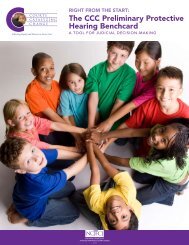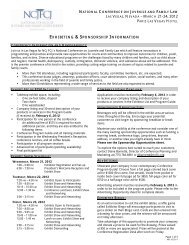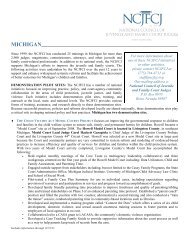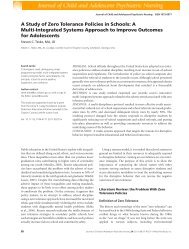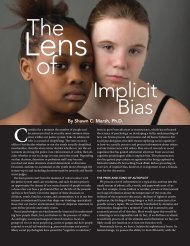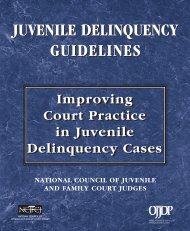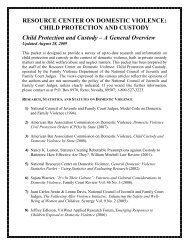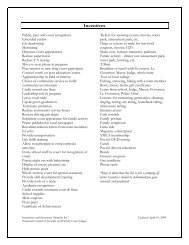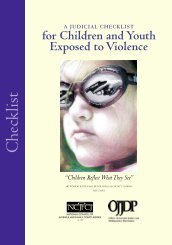EDUCATION UNDER ARREST: - Justice Policy Institute
EDUCATION UNDER ARREST: - Justice Policy Institute
EDUCATION UNDER ARREST: - Justice Policy Institute
- No tags were found...
You also want an ePaper? Increase the reach of your titles
YUMPU automatically turns print PDFs into web optimized ePapers that Google loves.
<strong>EDUCATION</strong> <strong>UNDER</strong> <strong>ARREST</strong> 31RECOMMENDATIONSSchools did not always rely on law enforcement to maintain order and ensure safety. Despite evidencethat schools are no more dangerous than they were 30 years ago or in relation to other situations,including home life, there is continued reliance on a law enforcement approach and harsh policies to dealwith discipline in schools. New research and increased momentum as a result of the tireless efforts ofadvocates has resulted in significant innovation and even federal acknowledgement of the problem. Thefollowing recommendations reflect the ongoing efforts to reduce the number of students referred to thejuvenile justice system from schools or who eventually end up in the justice system because they havebeen expelled, suspended, or otherwise alienated from school.Remove all law enforcement officers from schools: School safety can be addressed without on-siteSROs. And although there is some evidence that SROs can play a positive role as counselors and mentorsin schools, these roles can be better filled by people primarily trained in these areas.Refrain from using law enforcement responses to student behavior: Schools did not always call policeor rely on SROs to deal with all manner of student behavior. Schools should make a concerted effort toavoid calling the police or using a law enforcement response for all but the most serious offenses.<strong>Institute</strong> a system to review the validity of arrests within the circumstances of the offense: Similar toConnecticut, jurisdictions could implement a system by which an agency, like the juvenile court, couldreview arrests and referrals coming from schools to determine whether or not they should be handledwithin the court or by some other means. This data collection would include the rate at which the courtsdismiss cases referred by schools versus other sources. In this way, arrests and referrals for minoroffenses, like disorderly conduct, could be prevented from entering the justice system and over timeofficers will learn to stop making unnecessary arrests.Invest in education: Investing in education both improves achievement and promotes safer schools.Ways to do that include increased hiring of quality teachers, staff, counselors, and other positive rolemodels; building safe, clean schools; and providing training and supports for teachers and staff related tobehavior management.Invest in prevention and intervention strategies that work: Prevention and intervention comes in manyforms and includes Positive Behavioral Interventions and Supports, Social and Emotional Learning,student conflict resolution programs, mentoring, cognitive behavioral therapy in schools, and anynumber of peace resolutions in schools. In addition, schools should use alternatives to removing studentsfrom school if they are displaying disruptive behaviors. All are just as effective for maintaining safety inschools and support the primary objective of schools: to provide education. In addition to system-levelinterventions, schools should make sure that students with individual mental health or other specialneeds receive appropriate services.Collect more, better data: There is no national data that shows how many students are arrested inschools, let alone the additional data that would show the type of offense, the demographics of thestudents arrested (e.g. age, race, and whether or not a student is on an individualized education plan),and by what type of officer. Such data measures could be built into state measures of annual progress.



